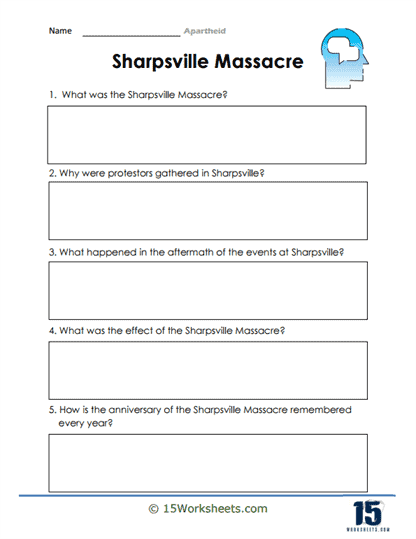Sharpsville Massacre

Worksheet Description
The Sharpeville Massacre refers to a tragic event that occurred on March 21, 1960, in Sharpeville, South Africa, during the era of apartheid. Apartheid was a system of racial segregation and discrimination enforced by the South African government between 1948 and 1994, which severely oppressed the non-white population.
The massacre took place when a large group of black South Africans gathered outside the Sharpeville police station to protest the “pass laws.” These laws required black South Africans to carry “passbooks” (also known as “dompas”) that documented their personal information, including employment and residence details. Failure to produce the passbook upon request by a police officer could result in arrest and imprisonment.
The protest in Sharpeville, organized by the Pan Africanist Congress (PAC), was meant to be peaceful, with demonstrators intentionally leaving their passbooks at home and presenting themselves for arrest. However, the situation escalated when the police started to disperse the crowd using tear gas and batons. In the chaos that followed, police officers opened fire on the unarmed protesters, killing at least 69 people and injuring over 180 others, many of whom were shot in the back as they tried to flee.
The Sharpeville Massacre brought international attention to the brutality of apartheid and the South African government’s oppressive policies. It led to an intensification of protests and resistance against apartheid, both domestically and internationally, and resulted in the banning of the African National Congress (ANC) and the PAC. The event is commemorated annually in South Africa as Human Rights Day, a public holiday that honors the victims and reminds citizens of the importance of human rights and the struggle against apartheid.
